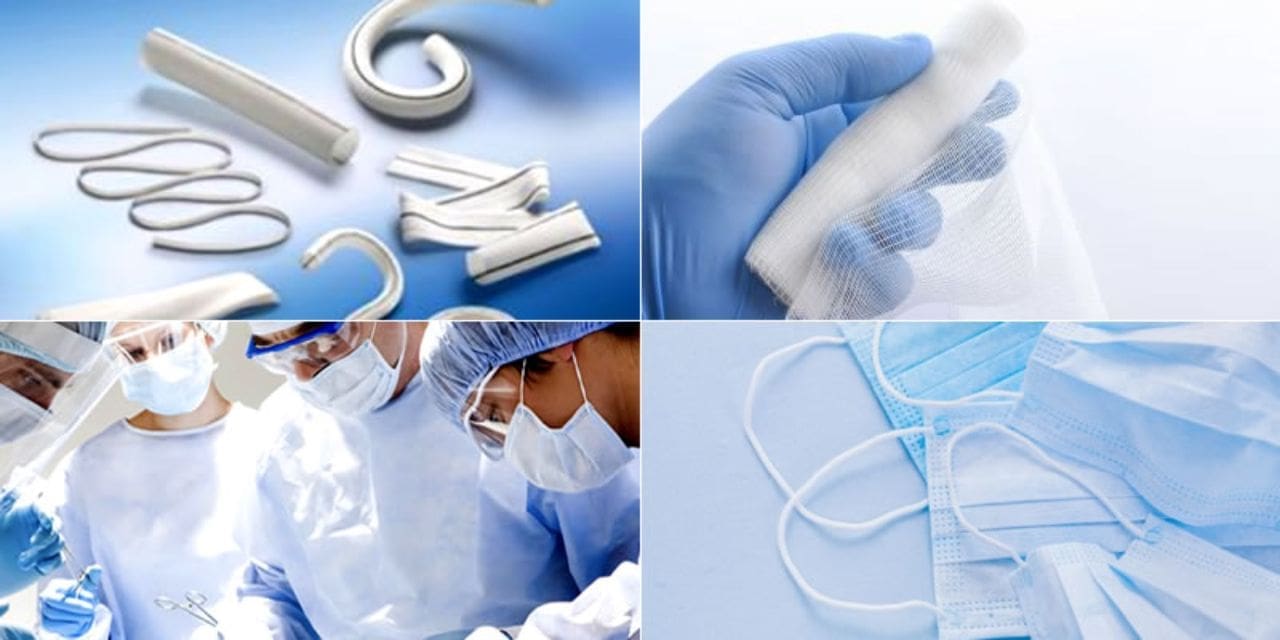The report “Healthcare Fabrics Market by Raw Material (Polypropylene, Cotton, Polyester, Viscose, Polyamide), Fabric Type (Non-woven, Woven, Knitted), Application (Hygiene, Dressing, Clothing, Curtains, Blanket & Bedding, Upholstery) – Global Forecast to 2025″, is projected to reach USD 23.3 billion by 2025, at a CAGR of 6.7% from USD 16.8 billion in 2020. The availability of smart fabrics is expected to provide new growth opportunities to the manufacturers of healthcare fabrics. Smart fabric is a wearable material that incorporates electronics. Smart fabrics are produced by embedding tiny semiconductors and sensors into the fabrics. The use of smart fabrics in patients’ clothing can help monitor heart rate, blood pressure, pulse rate, body temperature, respiratory rate, humidity, and pH level. Smart textile is being developed using fibers, including cotton, polyester, and linen.
Browse
• 366 Market data Tables
• 71 Figures
• 298 Pages and in-depth TOC on “Healthcare Fabrics Market – Global Forecast to 2025”
Some of the prominent key players are:
- Kimberly-Clark Corporation (US)
- Berry Global Group Inc. (US)
- Freudenberg Group (Germany)
- Ahlstrom Munksjo OYJ (Finland)
- Asahi Kasei Corporation (Switzerland)
Opportunities: Advancements in medical science and textile industry
The use of medical textile continues to grow at an astounding rate. With the improvement in health & hygiene facilities globally, the growth in medical textile technology is significantly growing. Big corporations are investing in R&D to develop fabrics with better quality and improved characteristics. Researchers are working hard to invent fabrics that have stability, elasticity, and porosity to fit various applications. Consumers are now more health-conscious, and with stringent government rules toward health and environment, companies are developing fabrics that are biocompatible, non-toxic, anti-allergic, and anti-bacterial during their life cycle usage. The development of medical textile has been successfully demonstrated in fibers, including cotton, polyester, and linen. This will provide high growth potential to the market in the future.
Non-woven is estimated to be the largest fabric type of the healthcare fabrics market during the forecast period.
Non-woven fabric is estimated to have accounted for the largest share of the healthcare fabrics market in 2019. Non-woven fabrics are innovative, versatile, and indispensable. These fabrics are commonly characterized by their manufacturing process, which includes dry laid, wet laid, spunmelt, and others. Different processes are used to manufacture products with desired characteristics. Non-woven fabrics are used in various non-woven fabrics ranging from baby diapers to adult incontinence products.
Europe is estimated to be the largest market for healthcare fabrics during the forecast period.
Europe is the largest market for healthcare fabrics, followed by APAC and North America. The growth of the healthcare fabrics market in Europe is supported by growing consumer awareness about hygienic and healthier products and expansion of the healthcare industry because of rising aging population. The market in Europe will also be supported by the continuous growth of the technical textiles industry and the rising demand for high-quality commodity products. According to the European Commission, Europe is one of the leaders in textile and clothing and represents more than 30% of the overall textiles market.

